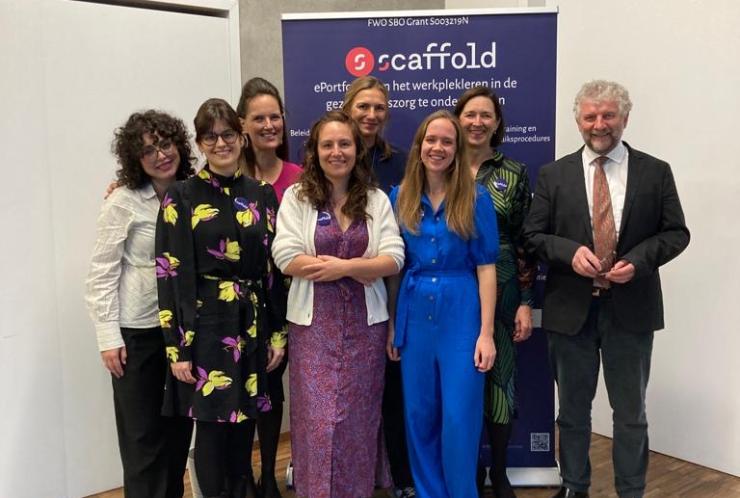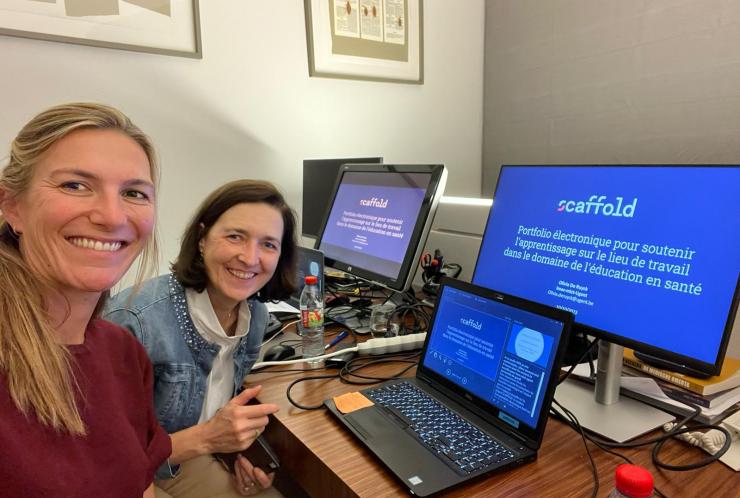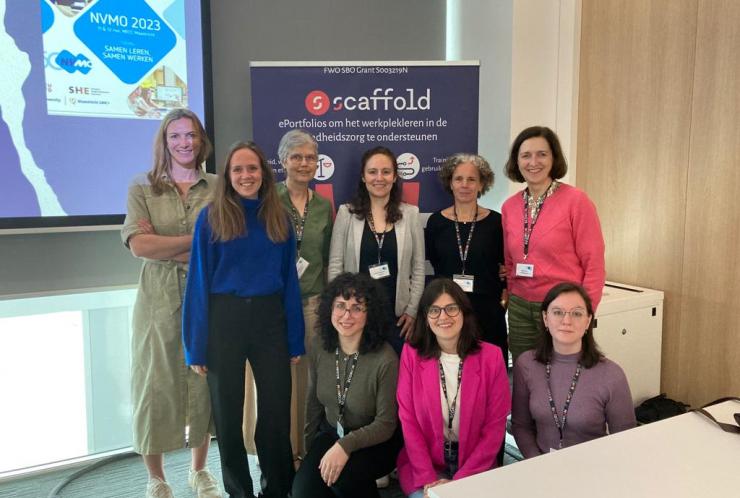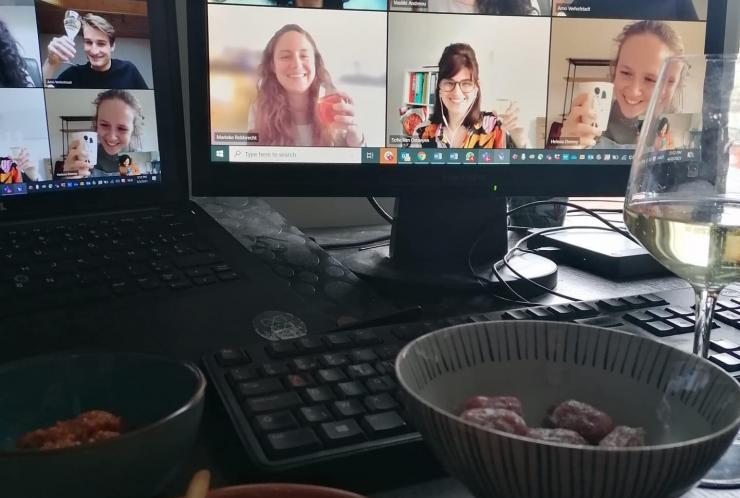User research is fundamental here. The research group for Media, Innovation and Communication Technologies is responsible for these aspects (imec-mict-UGent).
Finished studies
-
Mapping functional and technical needs for building a future ePortfolio
Aim: To map current needs of workplace learning in different healthcare education programmes using focus groups.
Results: To develop an ePortfolio that meets end-user needs, all end-users were involved in the development process. Both students, workplace mentors and internship supervisors connected to a university/college were invited to map current workplace learning in focus groups.
The following problems and unmet needs emerged and formed the basis for the subsequent design document (see below):
-Need to formulate and follow up on goals
-Need to stimulate and register learning moments
-Need to record ad hoc oral feedback
-Need for a clear overview of the student's competences to be achieved and already acquired
-Need for interaction between different end-users
-Current reflections are superficial and rarely provided with feedback.
-Final users are insufficiently stimulated to add content to their portfolio
-
Analysis of existing ePortfolios
Aim: Analysis of current ePortfolios with their functionalities
Results: Powerpoint presentation with the results of a comparative study and list of features. You can download it here:
-
Design document for the ePortfolio to be developed
Aim: Development of an optimal ePortfolio design through co-creation with users in previous research.
Results: Design document that forms the basis for the ePortfolio prototype. Development of the ePortfolio is subcontracted by the company Cronos-Foursevens and in several iterations (prototype 1, 2 and 3). Here the design is optimised each time on the basis of user tests with the future users of the ePortfolio.
-
Evaluation of prototype 1: lab-based proof of concept prototype
Aim: To investigate the ease of use, usability and attitude towards three feedback methods in an ePortfolio: open text feedback, structured text feedback and speech-to-text feedback.
Results: Structured text feedback, where users can provide feedback based on formulated questions, scored best as a feedback method. Speech-to-text feedback, where users can voice feedback that is automatically converted into text in the ePortfolio, does have great potential for workplace feedback input. Respondents would use it to record short feedback immediately after an incident as a reminder before later providing more extensive written feedback or to record verbal feedback to a student.
This study : “A comparison of three feedback formats in an ePortfolio to support workplace learning in healthcare education: a mixed method study” is published in Education and Information Technologies. You can read the full article here.
-
Evaluation and development of prototype 2
Aim: The development and evaluation of the second prototype focuses on the entry of competence lists by mentors and training coordinators.
Results: Qualitative interviews show that being able to enter and modify competence lists themselves adds value for ePortfolio users. We aim for a design in which programme managers can easily manage and create competences and competence criteria specific to their own direction.
The result of this study is a report that provides recommendations to improve prototype 2 (e.g. ease of use in entering competency frameworks) and to develop prototype 3 (e.g. visualisation of competency growth, and development of tutorials). More info on this will follow.
Ongoing studies
-
Evaluation and development of prototype 3
Aim: The development and evaluation of the third and final prototype, is aimed at visualising growth and creating feedback loops. Using qualitative interviews, researchers will introduce the prototype to potential users. They will test its use together to provide recommendations for final adjustments before delivery of the final prototype.
Presentations
NVMO conference, May 2023
In a roundtable session, we presented the Scaffold project and discussed the challenges of collaborating with different disciplines and the future of ePortfolio. You can read the abstract below:






